The Vermont Statutes Online
The Statutes below include the actions of the 2025 session of the General Assembly.
NOTE: The Vermont Statutes Online is an unofficial copy of the Vermont Statutes Annotated that is provided as a convenience.
Title 10 : Conservation and Development
Chapter 047 : Water Pollution Control
Subchapter 001 : WATER POLLUTION CONTROL
(Cite as: 10 V.S.A. § 1259)-
§ 1259. Prohibitions
(a) No person shall discharge any waste, substance, or material into waters of the State, nor shall any person discharge any waste, substance, or material into an injection well or discharge into a publicly owned treatment works any waste that interferes with, passes through without treatment, or is otherwise incompatible with those works or would have a substantial adverse effect on those works or on water quality, without first obtaining a permit for that discharge from the Secretary. This subsection shall not prohibit the proper application of fertilizer to fields and crops, nor reduce or affect the authority or policy declared in Joint House Resolution 7 of the 1971 Session of the General Assembly.
(b) Any records or information obtained under this permit program that constitutes trade secrets under 1 V.S.A. § 317(c)(9) shall be kept confidential, except that such records or information may be disclosed to authorized representatives of the State and the United States when relevant to any proceedings under this chapter.
(c) No person shall cause a direct discharge into Class A waters of any wastes that, prior to treatment, contained organisms pathogenic to human beings. Except within a waste management zone, no person shall cause a direct discharge into Class B waters of any wastes that prior to treatment contained organisms pathogenic to human beings.
(d) No person shall cause a discharge of wastes into Class A waters, except for on-site disposal of sewage from systems with a capacity of 1,000 gallons per day (gpd), or less, that are either exempt from or comply with the environmental protection rules, or existing systems, which shall require a permit according to the provisions of subsection 1263(f) of this title.
(e) Except for on-site disposal of sewage from systems of less than 6,500 gpd capacity that are either exempt from or comply with the environmental protection rules, no person shall cause any new or increased indirect discharge of wastes into Class B waters without a permit under section 1263 of this title. The Secretary shall not issue a permit for on-site disposal of sewage that discharges into Class B waters, unless the applicant demonstrates by clear and convincing evidence, and the Secretary finds, that the discharge:
(1) will not significantly alter the aquatic biota in the receiving waters;
(2) will not pose more than a negligible risk to public health;
(3) will be consistent with existing and potential beneficial uses of the waters; and
(4) will not cause a violation of water quality standards.
(f) Provided that the introduction of wastes are from sources that do not discharge pollutants from a point source into waters of the State, and comply with the federal Clean Water Act and federal CAFO regulation, the following activities shall not require a VPDES permit under section 1263 of this title:
(1) required agricultural practices, as adopted by rule by the Secretary of Agriculture, Food and Markets; or
(2) accepted silvicultural practices, as defined by the Commissioner of Forests, Parks and Recreation, including practices that are in compliance with the Acceptable Management Practices for Maintaining Water Quality on Logging Jobs in Vermont, as adopted by the Commissioner of Forests, Parks and Recreation.
(g) Nothing in this chapter shall prohibit the Secretary from approving nondischarging sewage treatment systems that the Secretary finds are safe, reliable, and effective.
(h) The Secretary shall adopt rules to ensure that the installation of two or more systems discharging sewage will not result in the circumvention of the purposes of this chapter or the requirements of this section.
(i) The Secretary shall regulate AFOs in accordance with federal requirements, and the VPDES CAFO Rules, and the Secretary of Agriculture, Food and Markets shall implement the State nonpoint source pollution control program planning, implementation, and regulation. This concurrent authority ensures comprehensive water quality protection and implements equivalent State nonpoint source pollution controls on farms not covered by the Clean Water Act. The Agencies shall cooperate and share information to enable effective and consistent regulation and enforcement. Not later than September 1, 2025, the Agency of Natural Resources, in consultation with the U.S. Environmental Protection Agency and the Agency of Agriculture, Food and Markets, shall issue a document that sets forth the respective roles and responsibilities of the Agency of Natural Resources in implementing the Clean Water Act on farms and responsibilities of the Agency of Agriculture, Food and Markets in implementing the State’s complementary nonpoint source program on farms. The document shall replace the existing memorandum of understanding between the agencies. The Secretary shall post the draft document and information regarding the document on the Agency’s website, shall issue public notice by press release and social media, shall submit the draft documents to the Senate Committees on Agriculture and on Natural Resources and Energy and the House Committees on Agriculture, Food Resiliency, and Forestry and on Environment, and shall allow for public comment. The proposed document shall be available for 30 days after the final date of publication for public review and comment. The Secretary of Natural Resources, in consultation with the Secretary of Agriculture, Food and Markets, shall review the document every five years to ensure compliance with the requirements of the Clean Water Act. If the document is substantially revised, it first shall be noticed in the same manner that applies to the initial memorandum. Actions by the Secretary of Agriculture, Food and Markets under this section shall be consistent with the water quality standards and water pollution control requirements of this chapter and the federal Clean Water Act as amended.
(j) No person shall discharge waste from hydraulic fracturing, as that term is defined in 29 V.S.A. § 503, into or from a pollution abatement facility, as that term is defined in section 1278 of this title. (Amended 1967, No. 181, § 2, eff. April 17, 1967; 1969, No. 252 (Adj. Sess.), § 7, eff. April 4, 1970; 1971, No. 255 (Adj. Sess.), § 3, eff. April 11, 1972; 1973, No. 103, § 5, eff. April 24, 1973; 1981, No. 222 (Adj. Sess.), § 25; 1985, No. 199 (Adj. Sess.), § 3, eff. May 17, 1986; 1991, No. 211 (Adj. Sess.), § 4; 1991, No. 261 (Adj. Sess.), § 3; 2003, No. 42, § 2, eff. May 27, 2003; 2005, No. 78, § 12, eff. June 24, 2005; 2011, No. 138 (Adj. Sess.), § 27, eff. May 14, 2012; 2011, No. 152 (Adj. Sess.), § 4, eff. May 16, 2012; 2015, No. 29, § 16; 2015, No. 64, § 51; 2015, No. 103 (Adj. Sess.), § 3, eff. May 12, 2016; 2017, No. 185 (Adj. Sess.), § 16, eff. May 28, 2018; 2025, No. 67, § 10, eff. July 1, 2025.)

